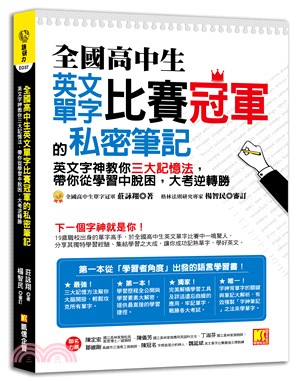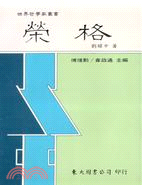INSTITUTIONAL BANKING FOR EMERGING MARKETS
商品資訊
相關商品
商品簡介
作者簡介
目次
商品簡介
In today's competitive banking industry, institutional banking is attracting greater interest. Under the globalization umbrella, inter-bank business is undergoing dynamic change and is transcending the boundaries of traditional correspondent banking. In today's climate, no bank, regardless of size, can grow without the cooperation of other banks and no bank can hope to survive and prosper without utilizing emerging markets. Institutional banking in emerging countries has some unique functions: for example, problem solving is heavier and more crucial in emerging markets than in developed countries, given the irregularity of the market and non-transparency of the financial/legal systems. Moreover, it is particularly necessary to forge good relationships, day-to-day contact and personal communication, to provide better chances for product marketing and risk management. Products are therefore tailor-made and adapted as the situation dictates, a successful lesson for one case in one country cannot necessarily be repeated in another.
Huang provides a systematic framework for the subject combining both principles and practice. The direct experience of the author, allows him to write authoritatively about the subject with academic vigour as well as a large amount of practical knowledge which only a practitioner can provide.
The book contains numerous real life examples and case studies to allow the reader an insight into how Institutional Banking actually works in the real world. The book also contains a supplementary CD which includes chapter summary's and further information.
Note: CD-ROM/DVD and other supplementary materials are not included as part of eBook file.
Huang provides a systematic framework for the subject combining both principles and practice. The direct experience of the author, allows him to write authoritatively about the subject with academic vigour as well as a large amount of practical knowledge which only a practitioner can provide.
The book contains numerous real life examples and case studies to allow the reader an insight into how Institutional Banking actually works in the real world. The book also contains a supplementary CD which includes chapter summary's and further information.
Note: CD-ROM/DVD and other supplementary materials are not included as part of eBook file.
作者簡介
WEI-XIN HUANG is Adjunct Professor for Finance and Accounting, Webster University, Leiden and teaches at the Maastricht School of Management (MSM). His teaching includes courses at MBA, DBA, and EMBA level, including International Finance, Financial Institutions and Capital Markets, International Trade, Risk Management in Banking, Investment Bank and Fund management. He is also a regular Guest Lecturer at various universities in Europe and the Far East. He is a consultant on Asia Projects for both Deloitte & Touche International, Holland and for the European Savings Banks Association.
He is the Senior Manager and Far East Specialist at Fortisbank SA/NV, in Rotterdam, Netherlands.He has been a career banker with Fortisbank since 1990, when he joined ex-Mees Pierson before the take-over of Fortis – the resulting Fortisbank has its headquarters in Brussels and has employees operating throughout the world. During this period he worked in the business line for emerging markets. He was in charge of Asia before the merger with General Bank and later transferred to Brussels as Area Head of North Asia. He has worked along this line and has been active in institutional banking for most of his banking career.
Alongside this, Huang also delivers training for bankers in emerging markets both internally and externally. As an adjunct professor in several universities, he also teaches banking and finance for MBA/EMBA/DBA students. With his hands-on banking background he has the rare privilege of being a bridge between the academic ivory tower and the banking reality.
He is the Senior Manager and Far East Specialist at Fortisbank SA/NV, in Rotterdam, Netherlands.He has been a career banker with Fortisbank since 1990, when he joined ex-Mees Pierson before the take-over of Fortis – the resulting Fortisbank has its headquarters in Brussels and has employees operating throughout the world. During this period he worked in the business line for emerging markets. He was in charge of Asia before the merger with General Bank and later transferred to Brussels as Area Head of North Asia. He has worked along this line and has been active in institutional banking for most of his banking career.
Alongside this, Huang also delivers training for bankers in emerging markets both internally and externally. As an adjunct professor in several universities, he also teaches banking and finance for MBA/EMBA/DBA students. With his hands-on banking background he has the rare privilege of being a bridge between the academic ivory tower and the banking reality.
目次
Preface.
Introduction.
PART I EMERGING MARKETS.
1 Country Classification: Principles and Practice.
1.1 Definition and Scope.
1.2 Emerging Markets: ‘Symptoms’ and Similarities.
1.2.1 ‘Symptoms’.
1.2.2 Similarities.
1.3 Sink or Swim: The Evolution of Emerging Markets.
1.3.1 The 19th Century.
1.3.2 The 1930s.
1.3.3 The 1950s and 1960s.
1.3.4 The 1970s and 1980s.
1.3.5 The 1990s.
1.3.6 The 2000s.
1.4 Emerging Markets: The Potential.
Summary.
2 Emerging Markets: The Twin Crisis – Bank Crisis and Country Crisis.
2.1 Bank Crisis and Country Crisis.
2.2 The Twin Crisis and its Costs.
2.3 Bank Crisis and Country Crisis: Major Underlying Factors.
Summary.
3 Emerging Markets: The Culture Outline.
3.1 Culture and Importance of Culture in Business.
3.2 Different Dimensions of Culture.
3.3 Cultural Code in Some Countries.
Summary.
4 The Major Emerging Markets – BRICT: Brazil, Russia, India, China and Turkey.
4.1 Brazil.
4.1.1 Macro Environment.
4.1.2 Banking System in Brazil.
4.1.3 Cultural Code.
4.2 Russia.
4.2.1 Macro Environment.
4.2.2 Banking System in Russia.
4.2.3 Cultural Code.
4.3 India.
4.3.1 Macro Environment.
4.3.2 Banking System in India.
4.3.3 Cultural Code.
4.4 China.
4.4.1 Macro Environment.
4.4.2 Banking System in China.
4.4.3 Cultural Code.
4.5 Turkey.
4.5.1 Macro Environment.
4.5.2 Banking System in Turkey.
4.5.3 Cultural Code.
Summary.
5 Sovereign Rating and Country Risk.
5.1 Country Risk: Definition and its Importance.
5.2 Sovereign Default: History and Consequence.
5.2.1 History.
5.2.2 Consequence.
5.3 Country Risk Rating Principles.
5.3.1 Standard & Poor’s.
5.3.2 Euromoney.
5.3.3 Institutional Investor.
5.4 Limitations of Country Risk Rating.
5.5 Country Risk Evaluation in Practice.
5.5.1 Country Risk Credit Committee.
5.5.2 Techniques for Country Risk Assessment.
5.6 Recent Cases of Country Crisis in Emerging Markets.
5.6.1 The Russian Financial Crisis of August 1998.
5.6.2 The Financial Crisis in Argentina.
5.6.3 The Financial Crisis in Mexico.
5.6.4 Asian Crisis.
5.6.5 Country Crisis: Signs and Signals.
Summary.
PART II INSTITUTIONAL BANKING.
6 From Correspondent Banking to Institutional Banking: Past and Present.
6.1 The Origin of Correspondent Banking.
6.2 The Influence from the General Development of the Banking Industry.
6.3 Correspondent Banking Today: Towards an Institutional Relationship.
Summary.
7 The Products of Institutional Banking.
7.1 Account Service and Cash Management.
7.2 Account Services.
7.2.1 Shareholder Structure.
7.3 Trade Finance.
7.3.1 Various Ways to Finance Trade.
7.4 Financial Market and/or Investment Bank Products.
7.5 Other Products.
7.5.1 Custodian.
7.5.2 Syndication.
7.5.3 Asset Management.
7.5.4 Bancassurance.
Summary.
8 The Marketing Function of Institutional Banking.
8.1 Marketing Strategy: Market Segmentation.
8.2 Marketing Approaches.
8.2.1 Correspondence.
8.2.2 Regular Visit to Correspondent Banks.
8.2.3 Senior Level Meetings.
8.2.4 Work-together on Joint Projects.
8.3 Marketing Principles.
8.3.1 Reciprocity.
8.3.2 Earnings Motivation: ‘Profit Sharing’.
8.3.3 Complementary Relationship.
Summary.
9 The Risk Management Function of Institutional Banking.
9.1 Bank Risk Evaluation.
9.2 Privileges for Banks: Deposit Insurance.
9.3 Bank Evaluation Framework.
9.4 Bank Rating and Its Limitations.
9.4.1 Bank Rating Methodology.
9.4.2 Bank Rating Limitations.
9.4.3 Evaluation of Banks: The Practice.
9.5 Bank Failures and Bank Crisis.
9.5.1 Bank Crisis: The Concept.
9.5.2 Bank Crisis: Signs and Signals.
9.5.3 Bank Analysis Format.
Summary.
10 Institutional Banking and Institutional Banking Department.
10.1 The Institutional Banking Department.
10.2 The Roles for the Institutional Banking Department: An Account Manager, a Risk Manager or a Relationship Manager.
10.3 The Centralized VS Decentralized Pattern.
10.4 The Evaluation of the Performance of the Institutional Banking Department.
10.5 Human Resource Issues for the Institutional Banking Department.
Summary.
11 Institutional Banking: Fraud Prevention, Anti-money Laundering and Basel II.
11.1 Fraud.
11.1.1 Fraud in General.
11.1.2 Fraud of Forged Bank Papers.
11.1.3 Fraud in Trade Finance.
11.2 Money Laundering and Terrorism Financing.
11.3 Anti-Money Laundering Initiatives.
11.4 Basel II and its Implications to Institutional Banking.
Summary.
PART III INSTITUTIONAL BANKING FOR EMERGING MARKETS: PRODUCT MARKETING, RISK MANAGEMENT, RISK MITIGATION and PROBLEM SOLVING.
12 Characteristics of Institutional Banking for Emerging Markets.
12.1 Heterogeneousness.
12.2 Volatility.
12.3 Nature of Relationship.
12.4 Exotic Solutions.
12.5 Culture Sensitivity.
Summary.
13 Specialized Finance for Emerging Markets.
13.1 Project Finance.
13.1.1 Scope.
13.1.2 Characteristics.
13.1.3 Products/Product Structure.
13.1.4 International Network.
13.1.5 Risk Management.
13.2 Commodity Finance.
13.2.1 Scope.
13.2.2 Characteristics.
13.2.3 Products/Product Structure.
13.2.4 International Network.
13.2.5 Risk Management.
13.3 Micro Finance.
13.3.1 Scope.
13.3.2 Characteristics.
13.3.3 Products/Product Structure.
13.3.4 International Network.
13.3.5 Risk Management.
Summary.
14 Marketing for Emerging Markets.
14.1 Understanding the Culture and Banking Practice for Counterparties.
14.2 Understanding the Needs of Your Institutional Clients.
14.2.1 Cheap Funding for Liquidity Purposes.
14.2.2 Banking Know-how: Specialists and Skills.
14.2.3 Special Support.
14.2.4 Special Products.
14.3 The Price Issue in Marketing for Institutional Banking.
14.4 The Product Issue in Marketing for Emerging Markets.
Summary.
15 Risk Management for Emerging Markets.
15.1 Risk Management and Institutional Banking.
15.2 ‘Stop-go Policy: A Dilemma?
15.3 Principles of Risk Management.
15.3.1 Asset-backed Finance and Balance Sheet Finance.
15.3.2 Debt Finance and Equity Finance.
15.3.3 Financial Risk and Operational Risk.
15.3.4 Short-term and Long-term Finance.
15.4 Country Risk Management: Country Limit and its Related Issues.
15.5 Country Risk Management: Country Risk Registration.
15.6 Bank Risk Management: Bank Limit and its Related Issues.
Summary.
16 Risk Mitigation for Emerging Markets.
16.1 Risk Mitigation: Principles and Practice.
16.2 Structured Mitigation: Practical Cases.
16.3 International Mitigation – Risk Cover by National and Multilateral Financial Institutions for Development.
16.4 Market Mitigation: Political Risk Insurance.
16.5 Country Risk Solutions – Handling Distressed Sovereign Debt for Emerging Markets.
16.5.1 Debt Equity Swap.
16.5.2 Debt Rescheduling.
16.5.3 Debt Sale and Debt Collection.
16.6 Bank Risk Solution: Risk Participation.
16.6.1 Risk Participation and Syndication.
16.6.2 Risk Participation and Reciprocity of Institutional Banking.
16.6.3 Risk Participation Master Agreement.
16.6.4 Risk Participation Procedure.
16.7 Other Solutions to Bank Risk.
16.8 Tools for Risk Mitigation.
16.8.1 Letter of Assignment.
16.8.2 Letter of Comfort.
16.8.3 Pledge Agreement.
Summary.
17 Problem Solving for Emerging Markets.
17.1 Problems: Headaches to Banks.
17.2 Problem Analysis.
17.3 Negotiation and Counterparty’s Position.
17.4 Problem-Solving Framework.
17.5 Action Plan.
17.6 Legal Action as Last Resort.
17.7 Problem Solving: Cases.
17.7.1 Case 1 Compromise and Face-saving.
17.7.2 Case 2 New Lending and ‘Old Debts’.
17.7.3 Case 3 General Manager vs Operational Staff.
17.7.4 Case 4 Who is Right and Who is Wrong?
Summary.
Conclusion.
A Chronology of the Asian Crisis, 1997–1999.
Bibliography.
Index.
Introduction.
PART I EMERGING MARKETS.
1 Country Classification: Principles and Practice.
1.1 Definition and Scope.
1.2 Emerging Markets: ‘Symptoms’ and Similarities.
1.2.1 ‘Symptoms’.
1.2.2 Similarities.
1.3 Sink or Swim: The Evolution of Emerging Markets.
1.3.1 The 19th Century.
1.3.2 The 1930s.
1.3.3 The 1950s and 1960s.
1.3.4 The 1970s and 1980s.
1.3.5 The 1990s.
1.3.6 The 2000s.
1.4 Emerging Markets: The Potential.
Summary.
2 Emerging Markets: The Twin Crisis – Bank Crisis and Country Crisis.
2.1 Bank Crisis and Country Crisis.
2.2 The Twin Crisis and its Costs.
2.3 Bank Crisis and Country Crisis: Major Underlying Factors.
Summary.
3 Emerging Markets: The Culture Outline.
3.1 Culture and Importance of Culture in Business.
3.2 Different Dimensions of Culture.
3.3 Cultural Code in Some Countries.
Summary.
4 The Major Emerging Markets – BRICT: Brazil, Russia, India, China and Turkey.
4.1 Brazil.
4.1.1 Macro Environment.
4.1.2 Banking System in Brazil.
4.1.3 Cultural Code.
4.2 Russia.
4.2.1 Macro Environment.
4.2.2 Banking System in Russia.
4.2.3 Cultural Code.
4.3 India.
4.3.1 Macro Environment.
4.3.2 Banking System in India.
4.3.3 Cultural Code.
4.4 China.
4.4.1 Macro Environment.
4.4.2 Banking System in China.
4.4.3 Cultural Code.
4.5 Turkey.
4.5.1 Macro Environment.
4.5.2 Banking System in Turkey.
4.5.3 Cultural Code.
Summary.
5 Sovereign Rating and Country Risk.
5.1 Country Risk: Definition and its Importance.
5.2 Sovereign Default: History and Consequence.
5.2.1 History.
5.2.2 Consequence.
5.3 Country Risk Rating Principles.
5.3.1 Standard & Poor’s.
5.3.2 Euromoney.
5.3.3 Institutional Investor.
5.4 Limitations of Country Risk Rating.
5.5 Country Risk Evaluation in Practice.
5.5.1 Country Risk Credit Committee.
5.5.2 Techniques for Country Risk Assessment.
5.6 Recent Cases of Country Crisis in Emerging Markets.
5.6.1 The Russian Financial Crisis of August 1998.
5.6.2 The Financial Crisis in Argentina.
5.6.3 The Financial Crisis in Mexico.
5.6.4 Asian Crisis.
5.6.5 Country Crisis: Signs and Signals.
Summary.
PART II INSTITUTIONAL BANKING.
6 From Correspondent Banking to Institutional Banking: Past and Present.
6.1 The Origin of Correspondent Banking.
6.2 The Influence from the General Development of the Banking Industry.
6.3 Correspondent Banking Today: Towards an Institutional Relationship.
Summary.
7 The Products of Institutional Banking.
7.1 Account Service and Cash Management.
7.2 Account Services.
7.2.1 Shareholder Structure.
7.3 Trade Finance.
7.3.1 Various Ways to Finance Trade.
7.4 Financial Market and/or Investment Bank Products.
7.5 Other Products.
7.5.1 Custodian.
7.5.2 Syndication.
7.5.3 Asset Management.
7.5.4 Bancassurance.
Summary.
8 The Marketing Function of Institutional Banking.
8.1 Marketing Strategy: Market Segmentation.
8.2 Marketing Approaches.
8.2.1 Correspondence.
8.2.2 Regular Visit to Correspondent Banks.
8.2.3 Senior Level Meetings.
8.2.4 Work-together on Joint Projects.
8.3 Marketing Principles.
8.3.1 Reciprocity.
8.3.2 Earnings Motivation: ‘Profit Sharing’.
8.3.3 Complementary Relationship.
Summary.
9 The Risk Management Function of Institutional Banking.
9.1 Bank Risk Evaluation.
9.2 Privileges for Banks: Deposit Insurance.
9.3 Bank Evaluation Framework.
9.4 Bank Rating and Its Limitations.
9.4.1 Bank Rating Methodology.
9.4.2 Bank Rating Limitations.
9.4.3 Evaluation of Banks: The Practice.
9.5 Bank Failures and Bank Crisis.
9.5.1 Bank Crisis: The Concept.
9.5.2 Bank Crisis: Signs and Signals.
9.5.3 Bank Analysis Format.
Summary.
10 Institutional Banking and Institutional Banking Department.
10.1 The Institutional Banking Department.
10.2 The Roles for the Institutional Banking Department: An Account Manager, a Risk Manager or a Relationship Manager.
10.3 The Centralized VS Decentralized Pattern.
10.4 The Evaluation of the Performance of the Institutional Banking Department.
10.5 Human Resource Issues for the Institutional Banking Department.
Summary.
11 Institutional Banking: Fraud Prevention, Anti-money Laundering and Basel II.
11.1 Fraud.
11.1.1 Fraud in General.
11.1.2 Fraud of Forged Bank Papers.
11.1.3 Fraud in Trade Finance.
11.2 Money Laundering and Terrorism Financing.
11.3 Anti-Money Laundering Initiatives.
11.4 Basel II and its Implications to Institutional Banking.
Summary.
PART III INSTITUTIONAL BANKING FOR EMERGING MARKETS: PRODUCT MARKETING, RISK MANAGEMENT, RISK MITIGATION and PROBLEM SOLVING.
12 Characteristics of Institutional Banking for Emerging Markets.
12.1 Heterogeneousness.
12.2 Volatility.
12.3 Nature of Relationship.
12.4 Exotic Solutions.
12.5 Culture Sensitivity.
Summary.
13 Specialized Finance for Emerging Markets.
13.1 Project Finance.
13.1.1 Scope.
13.1.2 Characteristics.
13.1.3 Products/Product Structure.
13.1.4 International Network.
13.1.5 Risk Management.
13.2 Commodity Finance.
13.2.1 Scope.
13.2.2 Characteristics.
13.2.3 Products/Product Structure.
13.2.4 International Network.
13.2.5 Risk Management.
13.3 Micro Finance.
13.3.1 Scope.
13.3.2 Characteristics.
13.3.3 Products/Product Structure.
13.3.4 International Network.
13.3.5 Risk Management.
Summary.
14 Marketing for Emerging Markets.
14.1 Understanding the Culture and Banking Practice for Counterparties.
14.2 Understanding the Needs of Your Institutional Clients.
14.2.1 Cheap Funding for Liquidity Purposes.
14.2.2 Banking Know-how: Specialists and Skills.
14.2.3 Special Support.
14.2.4 Special Products.
14.3 The Price Issue in Marketing for Institutional Banking.
14.4 The Product Issue in Marketing for Emerging Markets.
Summary.
15 Risk Management for Emerging Markets.
15.1 Risk Management and Institutional Banking.
15.2 ‘Stop-go Policy: A Dilemma?
15.3 Principles of Risk Management.
15.3.1 Asset-backed Finance and Balance Sheet Finance.
15.3.2 Debt Finance and Equity Finance.
15.3.3 Financial Risk and Operational Risk.
15.3.4 Short-term and Long-term Finance.
15.4 Country Risk Management: Country Limit and its Related Issues.
15.5 Country Risk Management: Country Risk Registration.
15.6 Bank Risk Management: Bank Limit and its Related Issues.
Summary.
16 Risk Mitigation for Emerging Markets.
16.1 Risk Mitigation: Principles and Practice.
16.2 Structured Mitigation: Practical Cases.
16.3 International Mitigation – Risk Cover by National and Multilateral Financial Institutions for Development.
16.4 Market Mitigation: Political Risk Insurance.
16.5 Country Risk Solutions – Handling Distressed Sovereign Debt for Emerging Markets.
16.5.1 Debt Equity Swap.
16.5.2 Debt Rescheduling.
16.5.3 Debt Sale and Debt Collection.
16.6 Bank Risk Solution: Risk Participation.
16.6.1 Risk Participation and Syndication.
16.6.2 Risk Participation and Reciprocity of Institutional Banking.
16.6.3 Risk Participation Master Agreement.
16.6.4 Risk Participation Procedure.
16.7 Other Solutions to Bank Risk.
16.8 Tools for Risk Mitigation.
16.8.1 Letter of Assignment.
16.8.2 Letter of Comfort.
16.8.3 Pledge Agreement.
Summary.
17 Problem Solving for Emerging Markets.
17.1 Problems: Headaches to Banks.
17.2 Problem Analysis.
17.3 Negotiation and Counterparty’s Position.
17.4 Problem-Solving Framework.
17.5 Action Plan.
17.6 Legal Action as Last Resort.
17.7 Problem Solving: Cases.
17.7.1 Case 1 Compromise and Face-saving.
17.7.2 Case 2 New Lending and ‘Old Debts’.
17.7.3 Case 3 General Manager vs Operational Staff.
17.7.4 Case 4 Who is Right and Who is Wrong?
Summary.
Conclusion.
A Chronology of the Asian Crisis, 1997–1999.
Bibliography.
Index.
主題書展
更多
主題書展
更多書展本週66折
您曾經瀏覽過的商品
購物須知
外文書商品之書封,為出版社提供之樣本。實際出貨商品,以出版社所提供之現有版本為主。部份書籍,因出版社供應狀況特殊,匯率將依實際狀況做調整。
無庫存之商品,在您完成訂單程序之後,將以空運的方式為你下單調貨。為了縮短等待的時間,建議您將外文書與其他商品分開下單,以獲得最快的取貨速度,平均調貨時間為1~2個月。
為了保護您的權益,「三民網路書店」提供會員七日商品鑑賞期(收到商品為起始日)。
若要辦理退貨,請在商品鑑賞期內寄回,且商品必須是全新狀態與完整包裝(商品、附件、發票、隨貨贈品等)否則恕不接受退貨。























